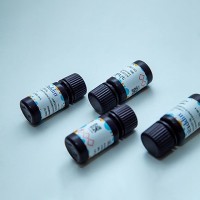High-Throughput Purification of PolyHis-Tagged Recombinant Fusion Proteins
互联网
651
Methods for the efficient overexpression and purification of recombinant proteins are of paramount importance for biotechnology. In particular, for the era of functional genomics that we have entered after sequencing complete genomes, this has become a routine matter. High-throughput protein purification will, therefore, become a key technology to unravel the function of gene products (Fig. 1 ). To facilitate the procedure of protein purification, several tags to generate fusion proteins are available (e.g., polyHis, GST, MBP, CBP, and the like) for parallel purification using matrices coupled with affinity anchors, like Ni
2+
-nitrilotriacetic acid (Ni
2+
-NTA) which is a powerful chelating ligand for the purification of His
6
-tagged proteins under native conditions. Ni-NTA affinity matrices allow to purify the protein of interest contained in a crude protein mixture at a concentration of 1% in one step to more than 95% homogeneity (
1
).
Fig. 1.
Schematic overview of the high-throughput protein purification method. Cells are grown, harvested, and lysed in 1-mL square well blocks. The His
6
-tagged variants are isolated by transferring the lysate to Ni-NTA coated microplates from which they are eluted after washing. A 1.5-mL cell culture typically yields 5-10 pmol recombinant protein.






